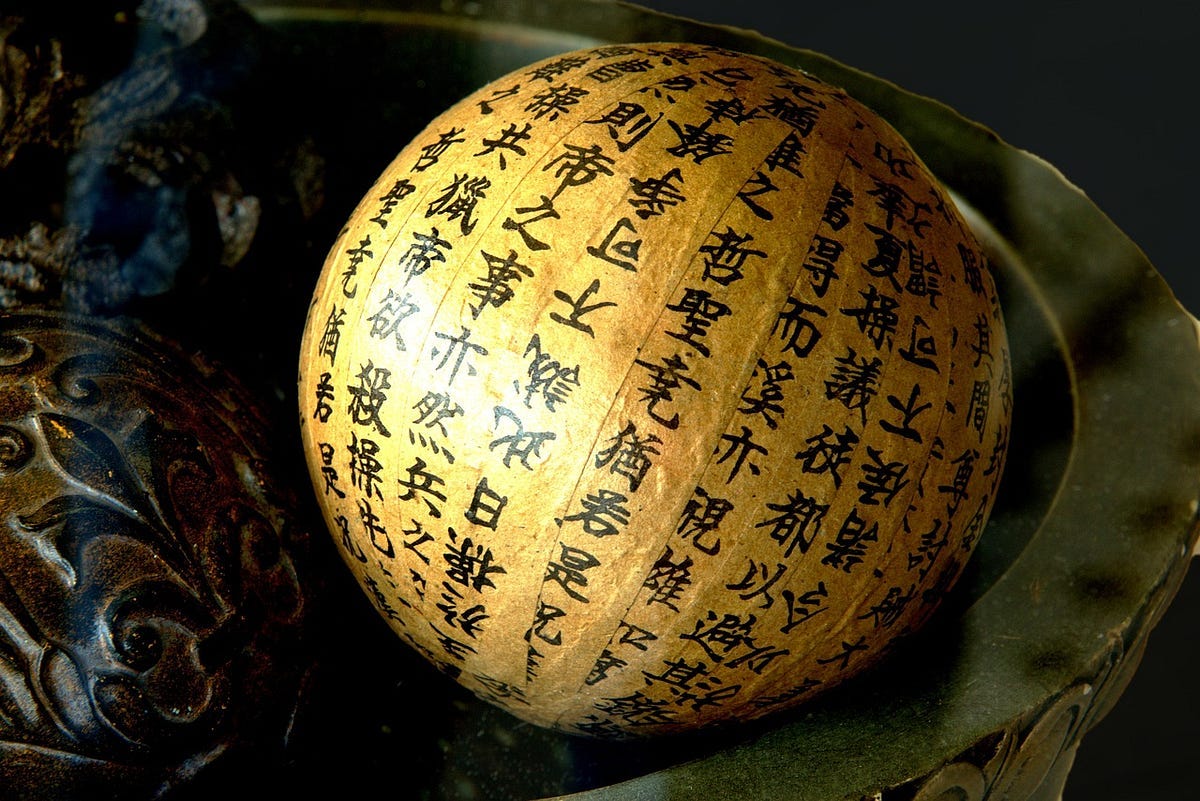When Romanizations Go Wrong
Why is Tao pronounced like Dao?
A Beginners Guide to Taoism
Why is Tao pronounced like Dao?
Where did Tao with a ‘T ‘ come from?
I’m often asked, “How do you pronounce Tao? Is it with a T or a D?”
To answer this question, we must travel back to the 1850s. Pretend you travel to China only to discover that you not only have to learn to speak a significantly different tonal language, but you can’t even begin to read written Chinese because they don’t use Latin characters. So, what do you do?
If you are Thomas Francis Wade, you begin work on a romanization of the Chinese language. In other words, you turn a phrase like 你好 into something Westerners can read: nihao.

Using Roman (Latin) characters to read and pronounce other languages phonetically is as old as the Romans. The Romans’ first known Romanization was in ancient Greece in the 1st century. Others soon followed, such as Hebrew, Brahmic, and Japanese.
Several romanizations were created throughout history, but they still needed to be academically standardized for traditional Chinese. Wade, however, decided to do so. He spent the rest of his life working on this project with other scholars, such as Herbert Giles and his son, Lionel Giles. By the early 20th century, the Wade-Giles system was in full force in academia and had become the standard Romanization for published works.
With this new system, Chinese culture and language reached new audiences and increased its visibility on the world stage. Soon, new students became scholars who passed on their learning to others. Eventually, hundreds of books existed using Wade-Giles.
In this Romanization, the phrase 道, translated as the way, is spelled Tao because that’s what Wade and Giles heard and how they learned to pronounce it.
Where did Dao with a ‘D’ come from?
Soon after World War II and another Chinese civil war, the new Chinese Communist Party (CCP) focused on standardizing their Romanization. Based on previous methods, such as the popular Wade-Giles, the CCP created a similar yet different model. As a tonal language, the new version named Hanyu Pinyin (mostly shorted to simply pinyin) had unique features such as tonal marks above the Latin letters.
For example, Tao became Dào with a tonal mark noting the tonal drop. In a tonal language, not only is your pronunciation important, but the tone of your voice can completely change the phrase’s meaning. Adding these marks, similar to accent marks found in French and Spanish, allowed for a more precise and straightforward method for Westerners to understand Chinese.
Pinyin was quickly adopted by the CCP and adopted by the United Nations for all government and official Chinese documentation and communications.
Which one is correct?
Only some people, however, were happy with the new system. Specifically, Taiwan, who, after the Chinese civil war, claimed to rule mainland China, adopted Wade-Giles as their official Romanization. Governments, schools, and all official communications in Taiwan are still written using the older Wade-Giles method.
The CCP, wanting to show control of an island they claim as their own, has pushed pinyin into the forefront of modern Chinese education, which includes international schools, apps, and online platforms. The CCP also offers certifications for learning Chinese using pinyin. For example, if you’ve ever used Duolingo to learn Mandarin, you learned pinyin.

So, how do you pronounce 道?
When you hear someone speak Mandarin, the tone their mouth makes is a strong D. Should you talk back to them, but use a T sound as in Tao, they will likely know what you mean, but you might incur some funny looks in return.
Because most of the translations of Taoist texts were completed decades ago, before pinyin was created, I found Tao everywhere. This spelling is prevalent in literature. Scholars, translators, and authors continue to use Wade-Giles because that’s how they learned to spell 道 and because of the political implications of accepting the CCP standard.
You’ll notice I also write 道 as Tao, such as The Taoist Online, which is the title of my publication and organization. In creating the name, I debated which Romanization to use. I knew using a ‘T’ would perpetuate the mispronunciation, yet I chose the Wade-Giles spelling due to its uniformity across academic resources, which are easily accessible online.
So, even though I can’t tell you which one to use when you write 道, I can tell you which one you should say.
Dao.
Thank you for reading and learning with me today! If you want to read more of my work, please follow me on Mastodon, or help support my organization, The Taoist Online.




